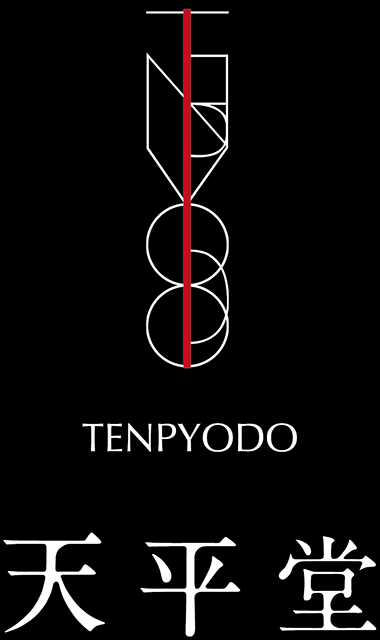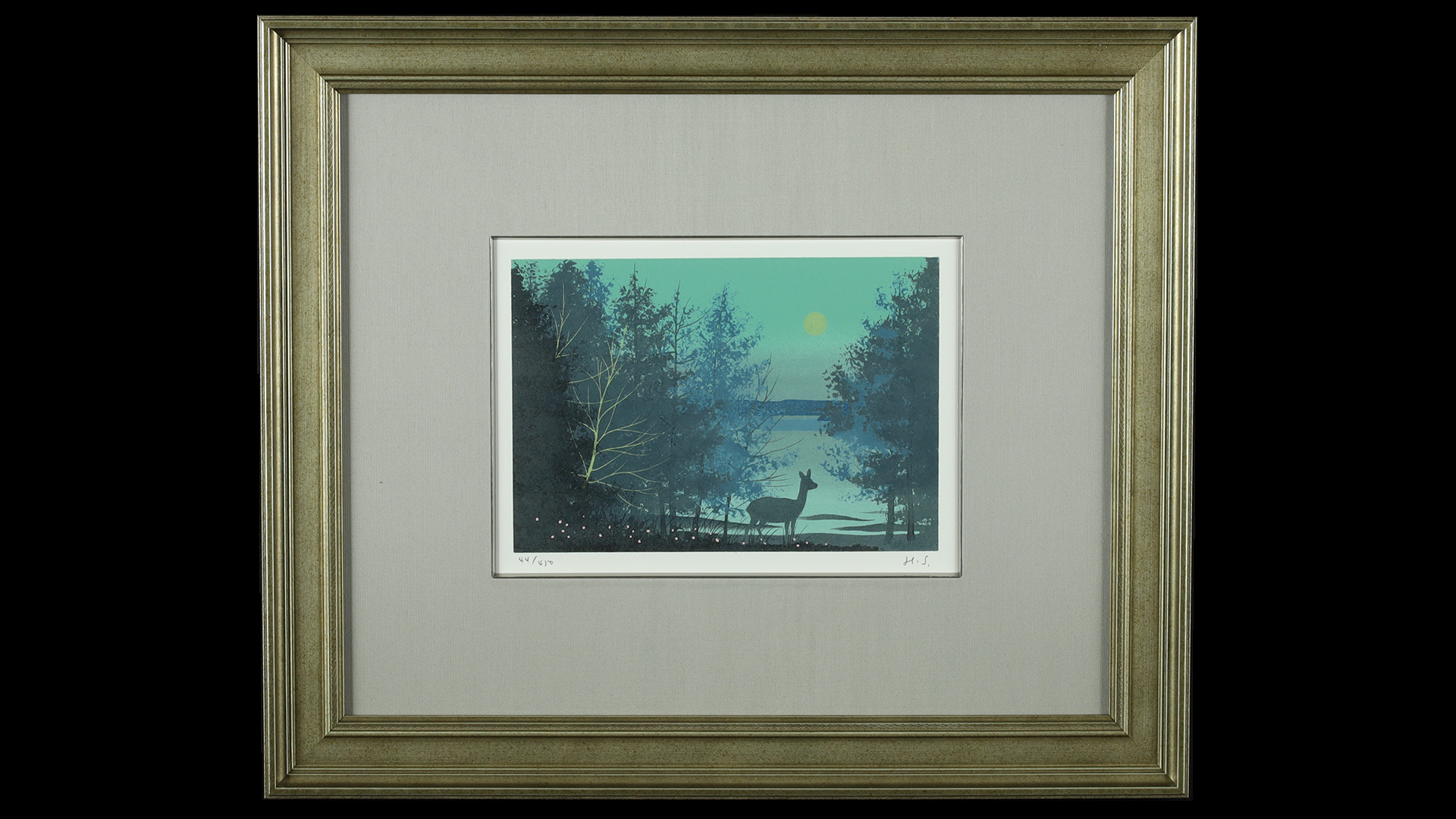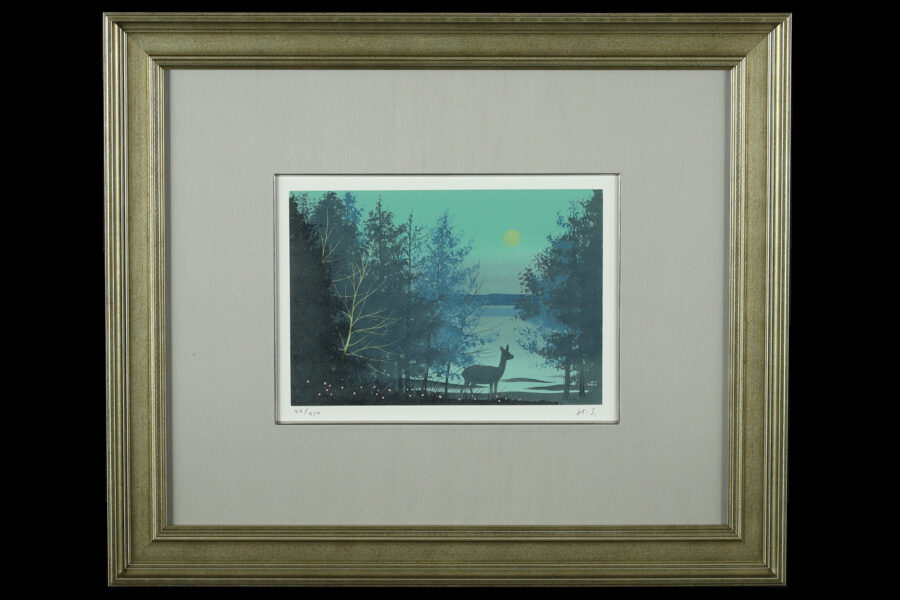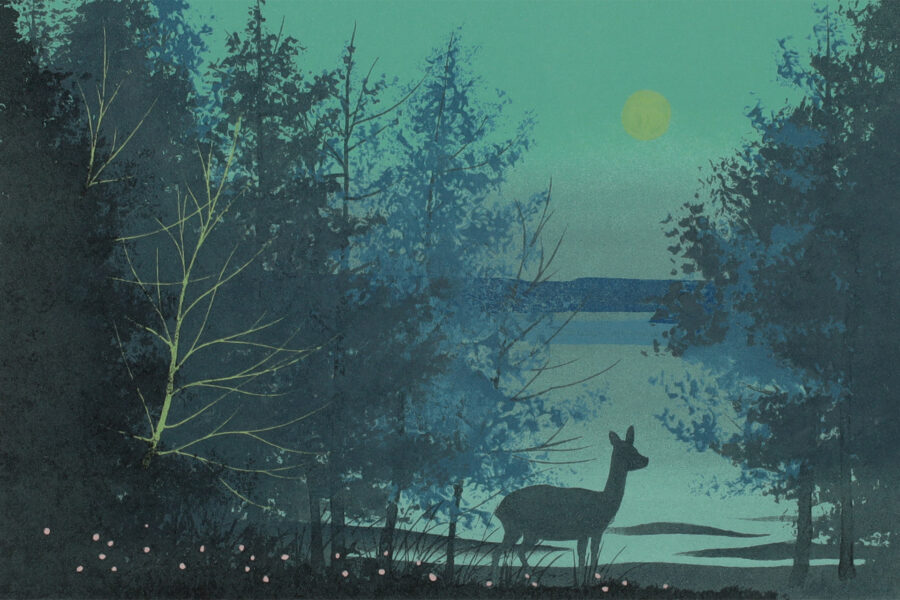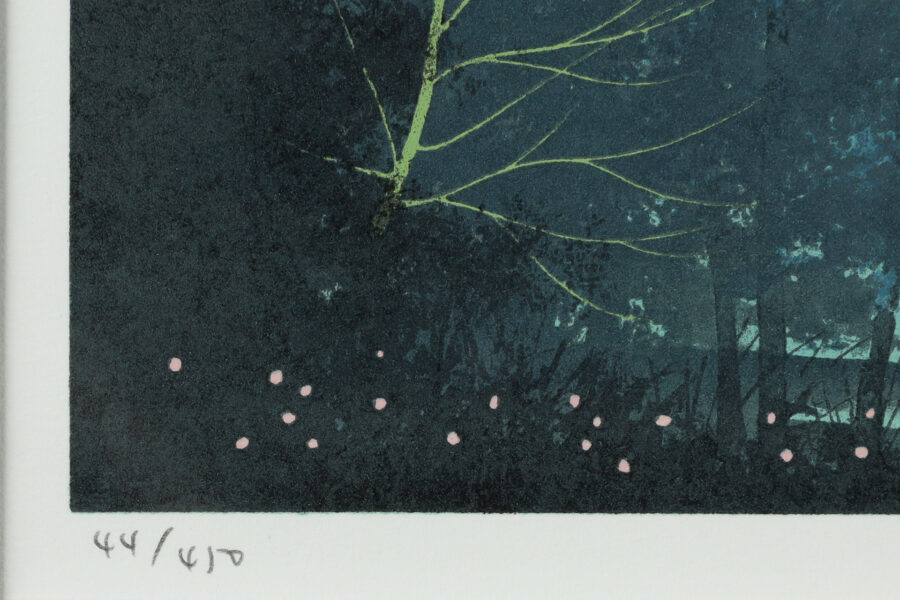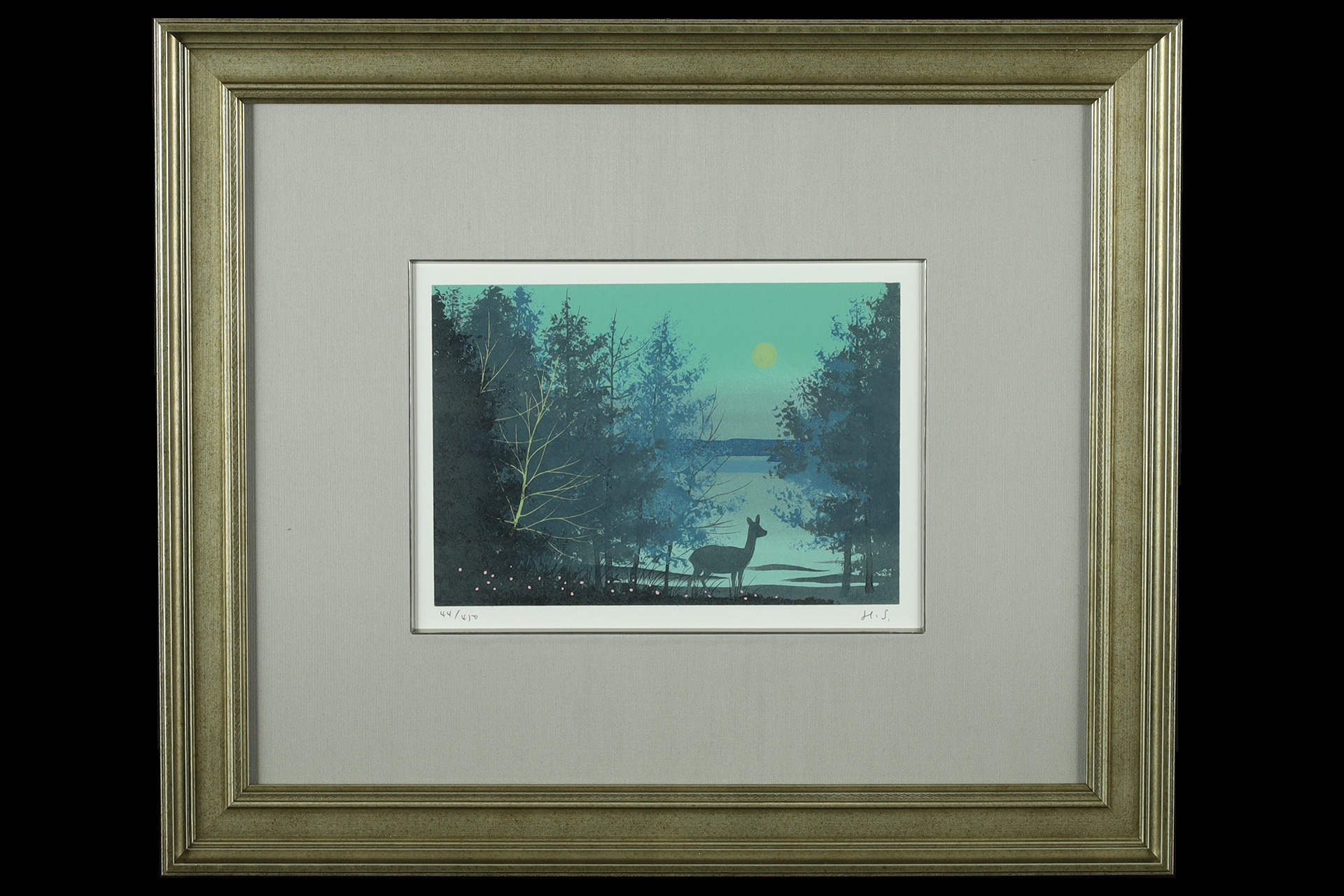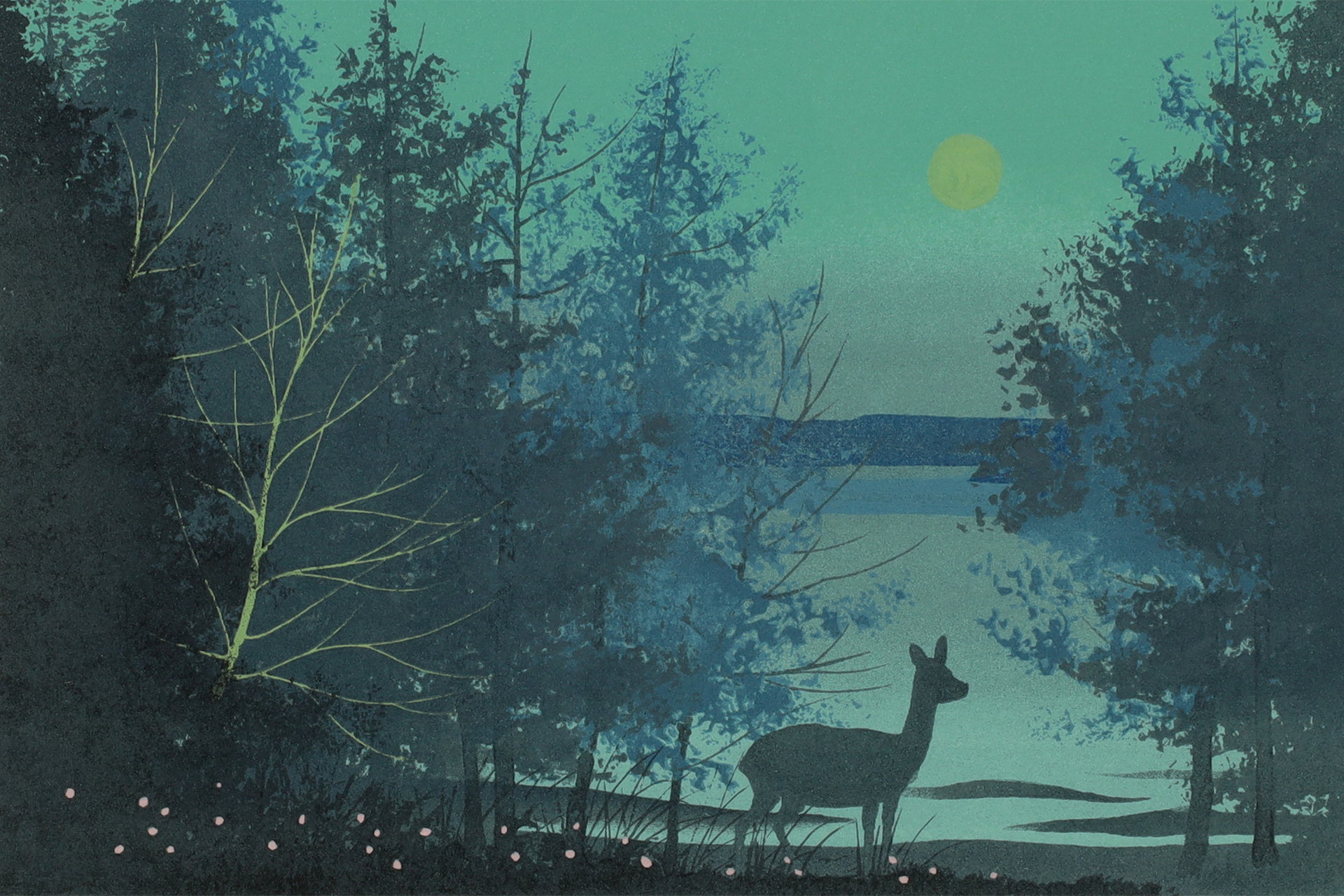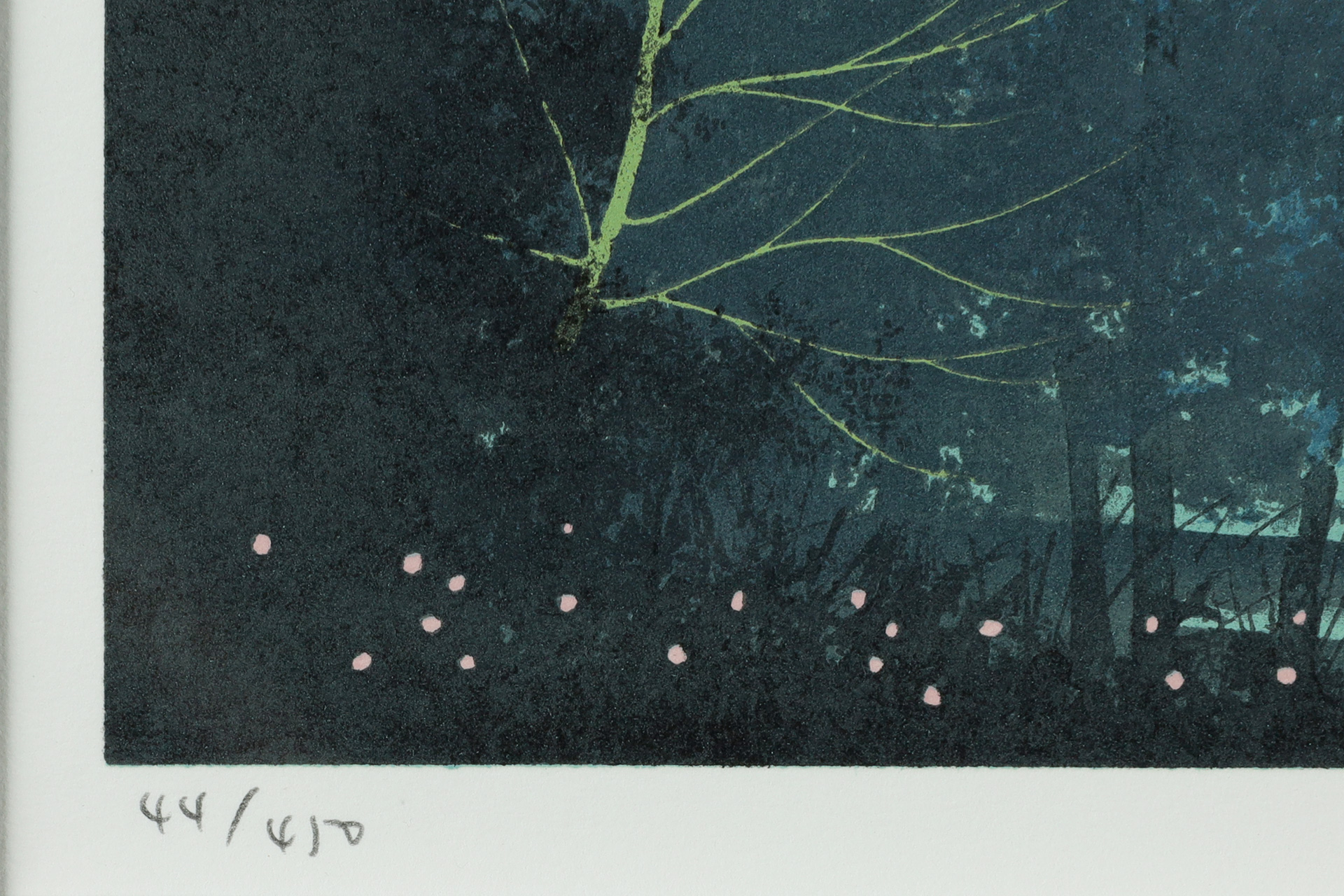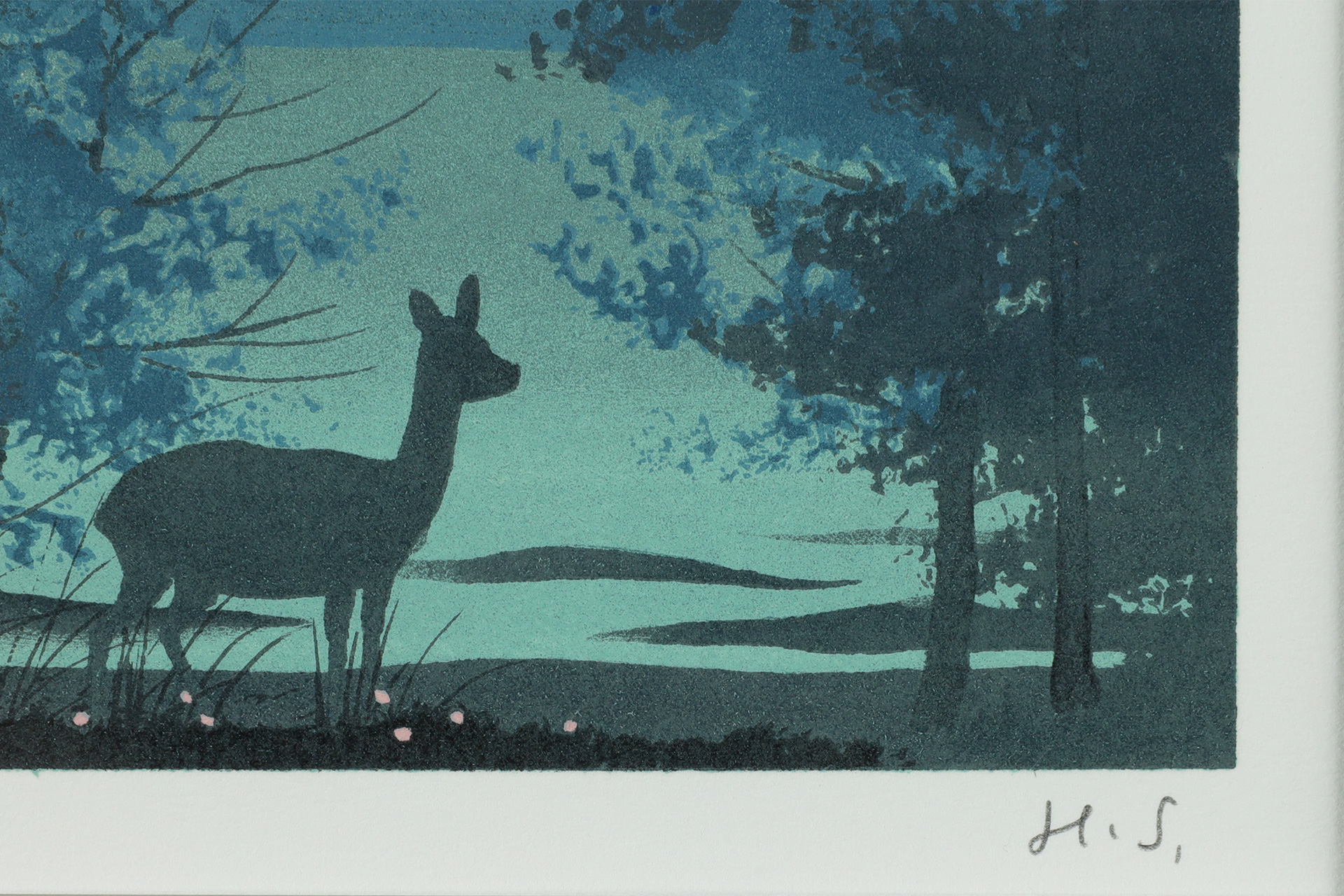It is the sublime work of "Deer", which has been considered to be the guardian deity of the forest since ancient times, illuminated by the full moon. Since the moon shines second only to the sun, it is believed that the word "Next" changed to become "Moon".
Inquiry
- Product Code
- 230715-1
- Artist
- Hiroshi Senju
1958-
Member of the Japan Art Academy
- Screen Size
- (Vertical)15.8×(Width)22.6cm
- Framed Picture Size
- (Vertical)41.7×(Width)49.9cm
- Category
- Lithograph
ed.450
- Description
- Framed Picture
- Condition
- Excellent Condition
Hiroshi Senju 1958-
Hiroshi Senju was born in Tokyo.
In 1982, graduated from Tokyo University of the Arts, Faculty of Fine Arts, Japanese Painting, Department.
In 1984, completed the Master’s Course at the Tokyo University of the Arts.
In 1987, completed the Doctoral Course at the Tokyo University of the Arts.
In 1989, held the “The End of Dream” exhibition at the Manly City Art Museum.
In 1990, held the “History of Modern Japanese Paintings by Collection” at the Museum of Modern Art, kamakura & hayama.
In 1993, selected for the cover of the new york art magazine “Gallery Guide”.
Held the “Flatwater” exhibition at the Maxwell Davidson Gallery.
In 1994, held the “Hiroshi Senju 1980-1994” exhibition at the Yamanaka Lake Takamura Art Museum.
Received the 4th “Kenbuchi Picture Book Award”.
Received the 7th MOA Mokichi Okada Excellence Award.
In 1995, held the “Hiroshi Senju” exhibition at the Taipei Fine Arts Museum.
Received the Honorary Award at the 46th Venezia Biennale.
In 1996, held the “Hiroshi Senju Waterfalls & Glasses” exhibition at the Hakone Open-Air Museum.
Since 1997, started to make the paintings on the fusuma of the Daitoku-ji Temple Juko-in.
In 1998, “August Sky and Clouds” in the collection of the Hiroshima City Museum of Contemporary Art received the Medal with Dark Blue Ribbon.
In 2000, “Ryoyonome / Painting in the 21th century” exhibition work “Life” received Michiaki Kawakita award.
In 2002, Participated in the “New Way of Tea” exhibition at the Japan Society and the Asia Society.
Participated in the “Scent and Shape of Ink” exhibition at the National Museum of Modern and Contemporary Art, Korea.
Received the 13th MOA Mokichi Okada Grand Award.
In 2003, completed the paintings on the fusuma of the Daitoku-ji Temple Juko-in, opened to the public “Paintings on the Fusuma of the Daitoku-ji Temple Juko-in” exhibition at the Tokyo National Museum.
Held the “Current Paintings” exhibition at the Niigata Bandaijima Art Museum.
Held the “Essence of Contemporary Japanese Painting” exhibition at the Contemporary Art Museum Kumamoto.
Held the “Modern Japanese Painting – The Adventurers -” exhibition at the Okazaki Mindscape Museum.
Made the “Waterfall” at the Grand Hyatt Tokyo.
In 2004, in charge of the art direction for the Terminal 2 at Haneda Airport(Tokyo International Airport).
In 2005, participated in the 44th Milano Salone “Lexus L Finesse” as the collaboration artist.
Held the “77panels of paintings on the fusuma of the Daitoku-ji Temple Juko-in” exhibition at the Fukuoka Asian Art Museum.
In 2006, exhibited at the 6th Gwangju Biennale.
Held the “Naoshima Standard 2” exhibition at the Benesse Art Site Naoshima.
Held the “Hiroshi Senju” exhibition at the Yamatane Museum of Art.
Designed the dial for the Jaeger-LeCoultre “Reverso” 75th anniversary special edition model.
In 2007, held the “Masterpiece Collection of the Yamatane Museum of Art” exhibition at the Museum of modern art, Toyama.
Held the “Building One Hundred Pillars, Emptiness is Form, Hiroshi Senju” exhibition at the Matsumoto city museum of art.
Held the “Haruka Naru Aoi Hikari” exhibition at the Sundaram Tagore Gallery.
Completed the paintings on the fusuma of the Philadelphia Shofuso(Waterfall Series).
In 2008, held the “Liquid Crystal Painting” exhibition.
Produced the ceramic board mural “Four Seasons Tree Figure” at the Akasaka Sacas Akasaka Biz Tower.
Produced the ceramic board mural “Waterfall” at the Tokyo Metro Fukutoshin Line, Shinjuku Sanchome Station.
In 2009, held the “New Light from a Far” and “Out of Nature” exhibition at the Sundaram Tagore Gallery.
In 2010, held the “Invitation to 20th Century Art” exhibition at the MUSEUM OF FINE ARTS, GIFU.
Held the “Masterpiece Collection of the Saku Municipal Museum of Modern Art” exhibition at the TAKASAKI TOWER MUSEUM OF ART.
Held the “Hiroshi Senju World of Blue Echoes of Kaii Higashiyama” exhibition at the Kagawa Prefectural Higashiyama Kaii Setouchi Art Museum.
In charge of the venue configuration for the “APEC 2010 Summit”.
In charge of the art direction for the Haneda Airport(Tokyo International Airport)International Passenger Terminal and expanded Terminal 2.
In 2011, in charge of the art direction for the JR Hakata Station.
Opened the “HIROSHI SENJU MUSEUM KARUIZAWA “.
Held the “Water, Fire, Earth the Source of Creativity” exhibition at the CONTEMPORARY ART MUSEUM KUMAMOTO.
Held the “Vision of Nature, Lost and Found, in Asian Contemporary Art” exhibition at the Hong Kong Arts Centre.
Exhibited at the 5th Chengdu Biennale.
Supervised the archive exhibition “Gift of Time” at the Kinkaku-ji Temple to commemorate GUCCI’s 90th anniversary.
In 2012, held the “CLIFFS” exhibition at the Sundaram Tagore Gallery.
Produced the ceramic board mural of the OUB Centre.
In charge of the stage design for “Japanese Dance with Orchestra – Traditional Perfomance -“.
In 2013, in charge of the stage design for the Opera “Kamikaze”.
In charge of the art direction for the Taisho University Sazaedo.
Supervised the KITTE opening memorial art project “Message Cherry Blossoms”.
In charge of the stage design for the “Prelude(Jyusuke Hanayagi and Tamasaburo Bando)”.
Produced the mural of the Eko-in.
Held the “Day Falls / Night Falls” exhibition at the Sundaram Tagore Gallery.
Held the “Tale of Genji – the Skies of Heian Period -” at the Sagawa Art Museum.
In 2014, in charge of the stage design for the opera “Yuzuru”.
In 2015, Held the “Day Falls / Night Falls” exhibition at Sundaram Tagore Gallery.
Produced the murals for the station building tiles at JR Onagawa Station.
Exhibited at the 56th Venezia Biennale “Frontiers Reimagined” exhibition.
Completed public art project by SOUTHERN BRANCH OF THE NATIONAL PALACE MUSEUM.
In 2016, Opened to the public the paintings on the fusuma of the Daitoku-ji Temple Juko-in and the national treasure paintings of Eitoku Kano.
Held the “Illusions in Water and Light” exhibition at the Yakushi-ji Temple Toindo. Received the Foreign Minister Award.
In 2017, held the “World’s End” exhibition at the Sundaram Tagore Gallery. Received the Isamu Noguchi awaAd.
In 2018, received the Excellence Art Award at the Japan America Society of Philadelphia.
Completed the fusuma paintings for the two main hall rooms of the Kongobu-ji Temple.
Held the “Hiroshi Senju Commemorating the Completion of the Fusuma Paintings of Koyasan Kongobu-ji Temple” exhibition at the Toyama Prefectural Museum of Art & Design.
Received the Japan-U.S. Special Achievement Award.
In 2021, the “Waterfall(Kongobu-ji Temple Fusuma Paintings)” received the Imperial Award and Japan Art Academy Award.
In 2022, designated as the Member of the Japan Art Academy.
In order to make the existence of the japanese painting and its techniques known to the world and to make it a truly international art field, not only produce paintings but also engage in a wide range of activities such as lectures and writing. He considers the idea of placing oneself close to nature as the basis of japanese culture, and uses it as a guideline for his own creative activities. The representative work “Waterfall”, received an honorary award at the Venice Biennale in 1995, making him the first painting by an Asian artist to do so. His younger brother is Akira Senju, a composer, his younger sister is Mariko Senju, a violinist, his father is Shizuo Senju, who has a doctorate in engineering, and his mother is Fumiko Senju, an educational critic and essayist.
